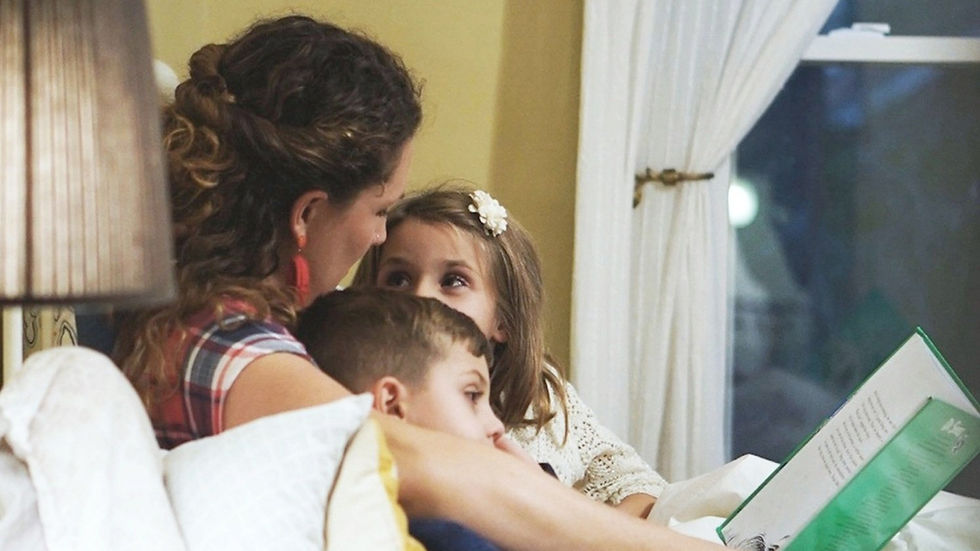📚 The Best Books to Help Preschoolers with /S/ Cluster Reduction
- Jun 2
- 3 min read
Updated: Jul 14
# Supporting Speech Development: Understanding Cluster Reduction
If your child says “poon” instead of “spoon” or “top” instead of “stop,” they may be using a common speech pattern called cluster reduction. The good news is that this pattern is a typical part of early speech development. You can gently support your child through fun activities, repetition, and the right books. Let’s break it down 👇
What Is Cluster Reduction?
Cluster reduction is a type of phonological process. This process defines a pattern many young children use while learning to talk. It occurs when a child simplifies a consonant cluster by dropping one sound. A consonant cluster consists of two consonants placed together.
💬 Common Examples:
spoon → poon
stop → top
slide → side
snow → no
grass → gass
plane → pane
While these patterns are developmentally appropriate for toddlers, they typically fade by age 4. If they continue beyond this age, they may affect how well others understand your child. At this point, speech therapy and strategic storytime can help.
🧠 What Is a Phonological Process?
A phonological process is the brain's way of simplifying complex speech sounds. While a child learns to coordinate everything necessary for clear speech, these processes act as shortcuts. They are common and expected aspects of growing up.
However, if these patterns persist beyond preschool age, they may hinder your child's ability to express themselves clearly and confidently.
📖 Why Books Help with Cluster Reduction
Books serve as one of the best tools for supporting speech sound development. This is especially true for s-blends like /sp/, /st/, /sn/, and /sk/. Here’s why reading books is effective:
✅ Repetition: Kids hear the same words frequently, which enhances auditory processing.
✅ Confidence: Predictable language structures foster feelings of success.
✅ Connection: Shared reading experiences help build language and relationship skills.
Pro tip: Choose books that use your target sounds clearly, fun, and repetitively. Let’s dive into some favorites 👇

Best Books for S-Blend Cluster Reduction
I typically highlight examples of /s/ blends and cluster reduction. This is because /s/ sounds significantly impact speech intelligibility. The following books are filled with s-blend words like /sp/, /st/, /sn/, /sm/, /sw/, and /sk/. Each book was carefully selected for its repetition, sound-loaded vocabulary, and preschool appeal.
These books are designed to help with speech sound development:
Where’s Spot? by Eric Hill
- /sp/
- A lift-the-flap favorite that repeats “Spot” throughout — great for modeling and practice.
The Very Busy Spider by Eric Carle
- /sp/, /st/
- Repetition of “spider” and “spinning” provides kids with a lot of exposure to s-blends in context.
Hats are Not for Cats! by Jacqueline K. Rayner
- /sp/, /st/, /sn/
- Includes s-blend words such as “spot,” “stack,” and “snug,” supporting targeted speech practice.
Go, Go, Go, STOP! by Charise Mericle Harper
- /sp/, /st/
- Features engaging s-blend words like “stop,” “spot,” and “start” for articulation practice.
Squirrels on Skis by J. Hamilton Ray
- /sk/, /sn/, /sw/, /st/
- A rhyming, fast-paced story filled with words like “ski,” “snow,” “swish,” and “street.”
Bonus: S-Blend Words to Use at Bedtime
You can reinforce your child’s speech practice during daily routines, especially at bedtime. Here are some high-frequency s-blend words that are easy to model:
“Time to sleep”
“Let’s read a story”
“Grab your stuffed animal”
“Put on your slippers”
“Sweet dreams, kiddo”
These moments accumulate over time. Every repetition counts!
Final Thoughts: Simple Stories, Big Gains
Cluster reduction is a normal part of learning to talk. However, if it persists, it can impact how well your child is understood. The good news is that you don’t need flashcards or rigorous drills. You just need a good story to share.
If you're ready for more support or want to check if your child’s speech is on track, we're here for you.
📞 Interested in Services?
The best way to reach us is through our online form or by sending us an email. We’re excited to learn more about your child’s needs!
Let’s grow great communicators — one bite-sized beginning at a time. 💬🐝
Stephanie SLP, Founder of Bite-Sized Beginnings Speech Therapy


